The benefits of mass timber—a structural system of engineered lumber formed by joining wood boards into larger members, each stronger and more durable than its constituent parts—are well known. Wood is a renewable resource and therefore has sustainable attributes. As trees grow, they capture carbon dioxide (CO2), a primary cause both of air pollution and global climate change. The production of concrete and steel, on the other hand, releases vast quantities of CO2 into the atmosphere. It follows that using sustainably produced timber as a structural material reduces the harmful environmental impact of buildings.
But is minimizing the negative effects of construction the best that architects can do? According to REFRAMED: The Future of Cities in Wood, an exhibition at the Chicago Architecture Center (CAC), the answer is a resounding no.
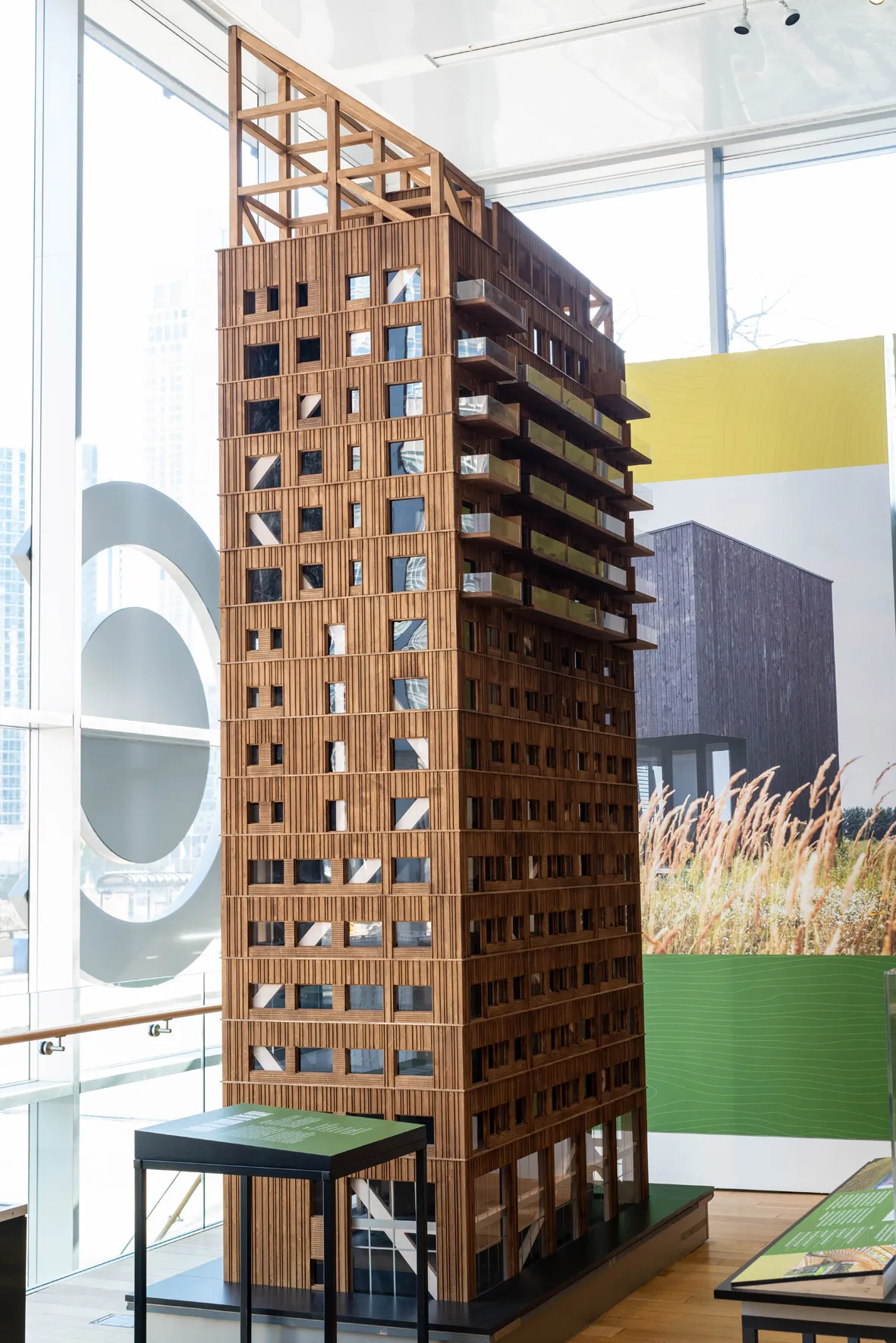
Model of Mjøstårnet, a tall timber tower in Brumunddal, Norway, designed by Voll Arkitekter. Photo © Anna Munzesheimer
Presented by the industry-funded Softwood Lumber Board and developed in partnership with the Council on Tall Buildings and Urban Habitat, this thoughtful and encyclopedic display of emerging technology and design, primarily in North America, will remain open through October 2023. Its elegant venue, CAC’s high-ceilinged Drake Family Skyscraper Gallery, overlooking the Chicago River and the North Michigan Avenue skyline, underscores the message that wood is more than just an environmentally useful construction material. In skilled and talented hands, it can be the basis of first-rate architecture and urbanism.
Marking the entry to REFRAMED is a secondary exhibit, RECOVERED: Chicago’s Urban Tree Canopy, curated by Ross Barney Architects, the firm of 2023 AIA Gold Medalist Carol Ross Barney. Here, visitors can learn about the impact of trees—from quality of life to quality of air—on the city dweller’s experience, along with species native to the area and planting initiatives throughout Chicago. Overhead is an enormous abstraction of a leafy canopy that allows dappled light to filter through, evoking a grove of trees
The introductory text of REFRAMED states the exhibit’s thesis clearly: mass timber has great potential for sustainable development and breathtaking design. Additional panels of text offer insight on topics ranging from sustainable sourcing to the recent interest in biophilia. Also addressed is the sequoia in the room: fire resistance, especially relevant in Chicago, a city that dates its rebirth to a catastrophic conflagration in 1871. The exhibition argues that wood has a long history of proven fire performance. Current lab tests on mass timber show it can withstand temperatures of 1800 degrees Fahrenheit for up to three hours. In recognition of this predictable performance, the 2024 International Building Code proposes to increase the permissible use of exposed mass-timber ceilings and beams in buildings up to 12 stories.
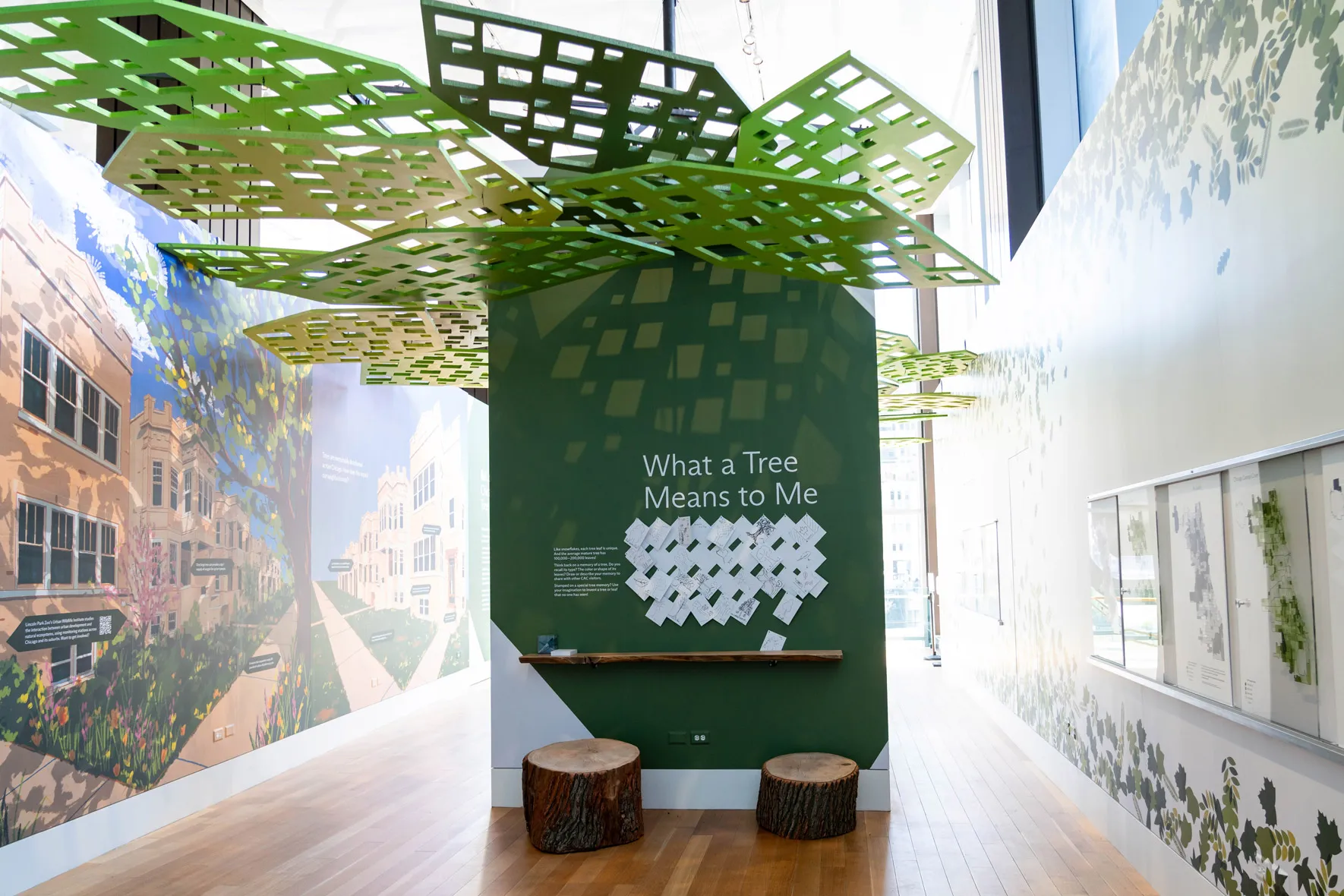
‘What a Tree Means to Me’ interactive exhibition at CAC asks visitors to recall a memory
of a tree and draw it. Photo © Anna Munzesheimer
From there, a sequence of displays unfolds, with photographs, renderings, models, and explanatory text documenting exceptionally handsome and well-designed projects, all using wood as a primary component. One standout is the Jones Beach Energy & Nature Center on Long Island, New York, a net zero mass-timber park facility by nARCHITECTS, perched above the dunes on the wooden piles of a former bathhouse.
On the West Coast is Arbor, a compact timber-framed office building in San Jose, California, to be completed in 2024 by Studio Gang. With cascading planted terraces, this project uses passive-design strategies to enhance natural lighting, shade, and ventilation. Also by Studio Gang are four new buildings, framed and clad in wood, that will be sensitively inserted into Charles Moore and William Turnbull’s 1971 “hill town” campus for Kresge College, sited in a redwood forest, at the University of California, Santa Cruz. These are due to be completed in 2025. Another noteworthy project is the San Mateo County Office Building in Redwood City, California, by SOM, expected to open this year. Located near the San Andreas Fault, the structure’s lightweight timber frame minimizes seismic mass and stress.
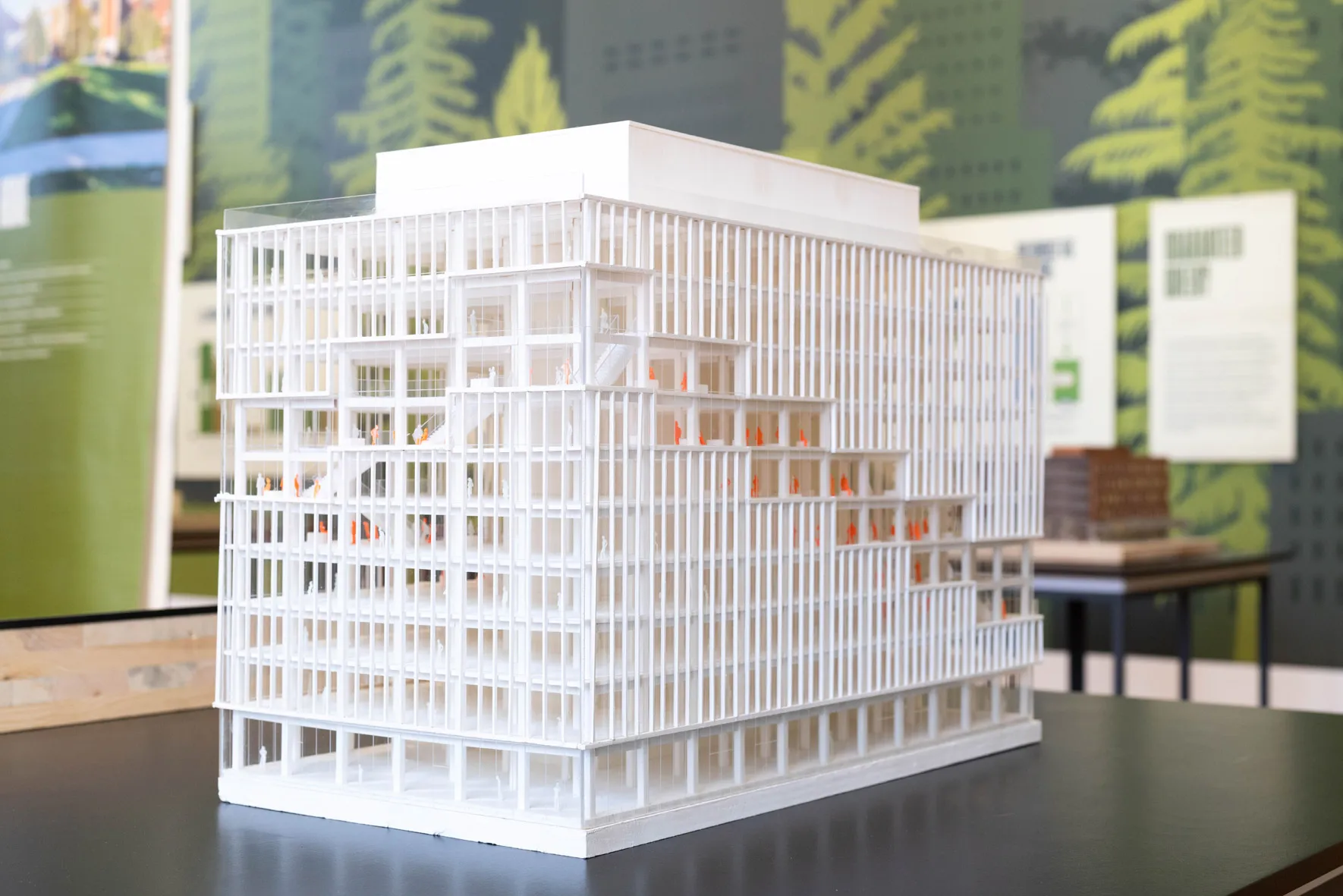
CLT used for 3XN Architects' T3 Bayside in Toronto is sourced from Quebec forests. Photo © Anna Munzesheimer
In Toronto, Adjaye Associates is collaborating with Alison Brooks Architects, Henning Larsen, and SLA Landscape Architects on Quayside, a proposal to redevelop 12 acres of the city’s lakefront, which will include the largest timber structure ever built in Canada (Phase 1 is due to be completed in 2030). Also in Toronto, DIALOG is working on a 105-story skyscraper with a hybrid structure: 40-by-10-foot cross-laminated timber (CLT) floor panels will be interwoven with steel and concrete. Its completion date has not yet been determined.
This is just a sampling of the many projects featured. But visitors need not worry about eyestrain or fatigue from this multitude of highly detailed presentations. If even the slightest bit overwhelmed, guests can retreat at any time to REFRAMED’s piece de resistance: a full-scale timber pavilion at the gallery’s center. Its walls are open grids of dimensional lumber, artfully mortised together. Inside are samples of the components of mass-timber construction: CLT panels, hefty columns and beams, and the massive steel connectors that hold them together. It’s a reminder that all the sophisticated architecture on display emerged from these basic building blocks.

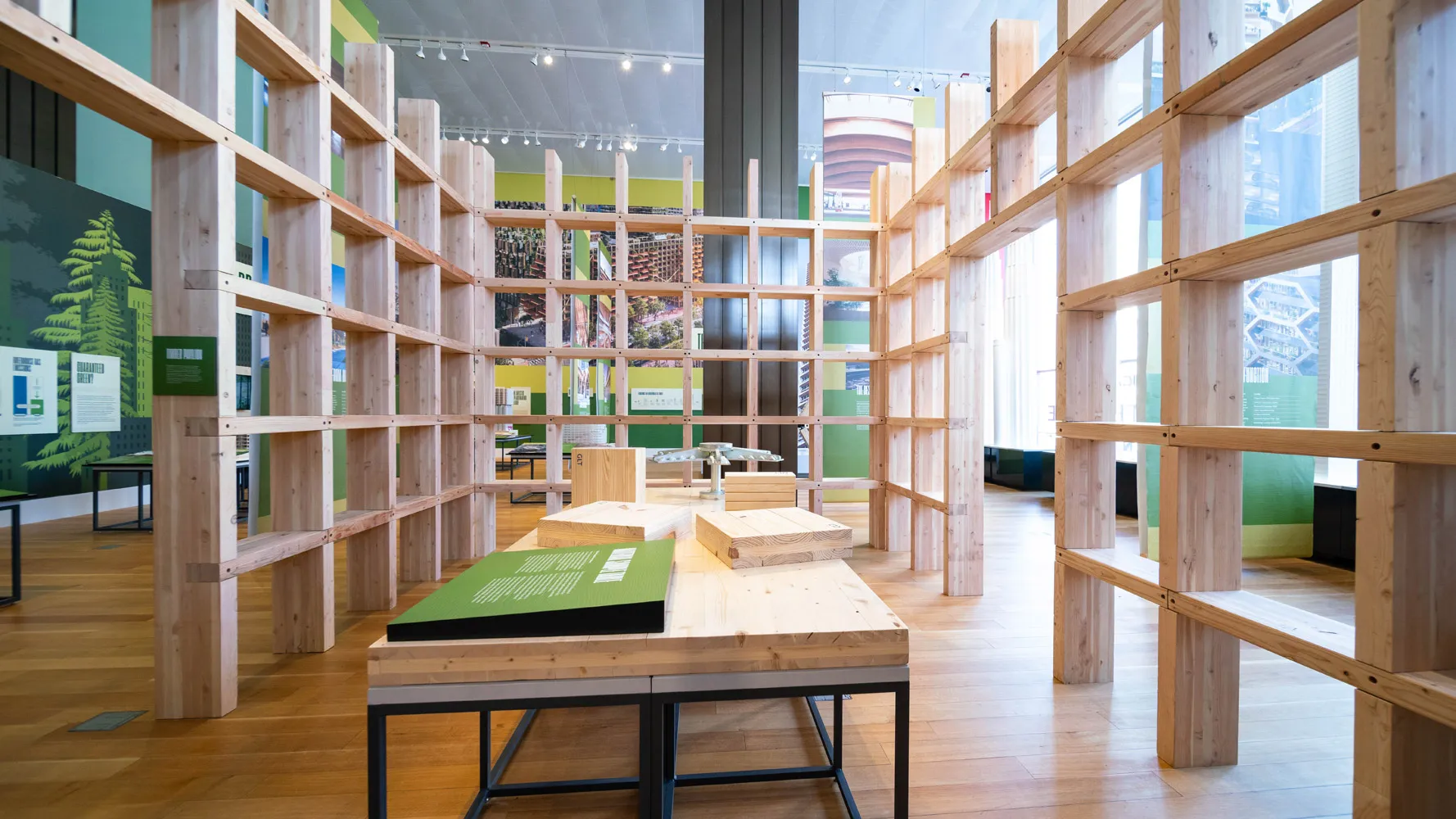
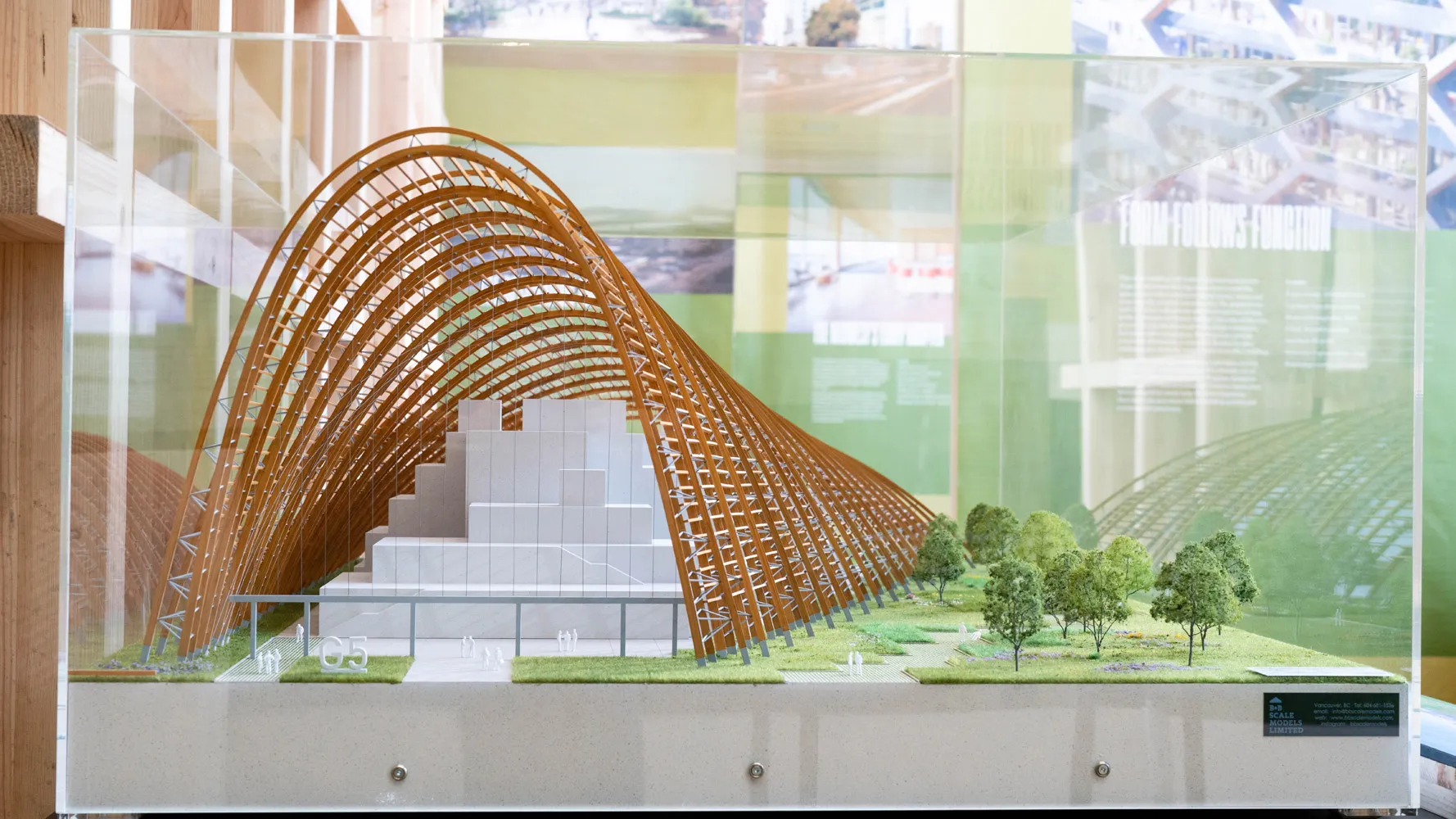
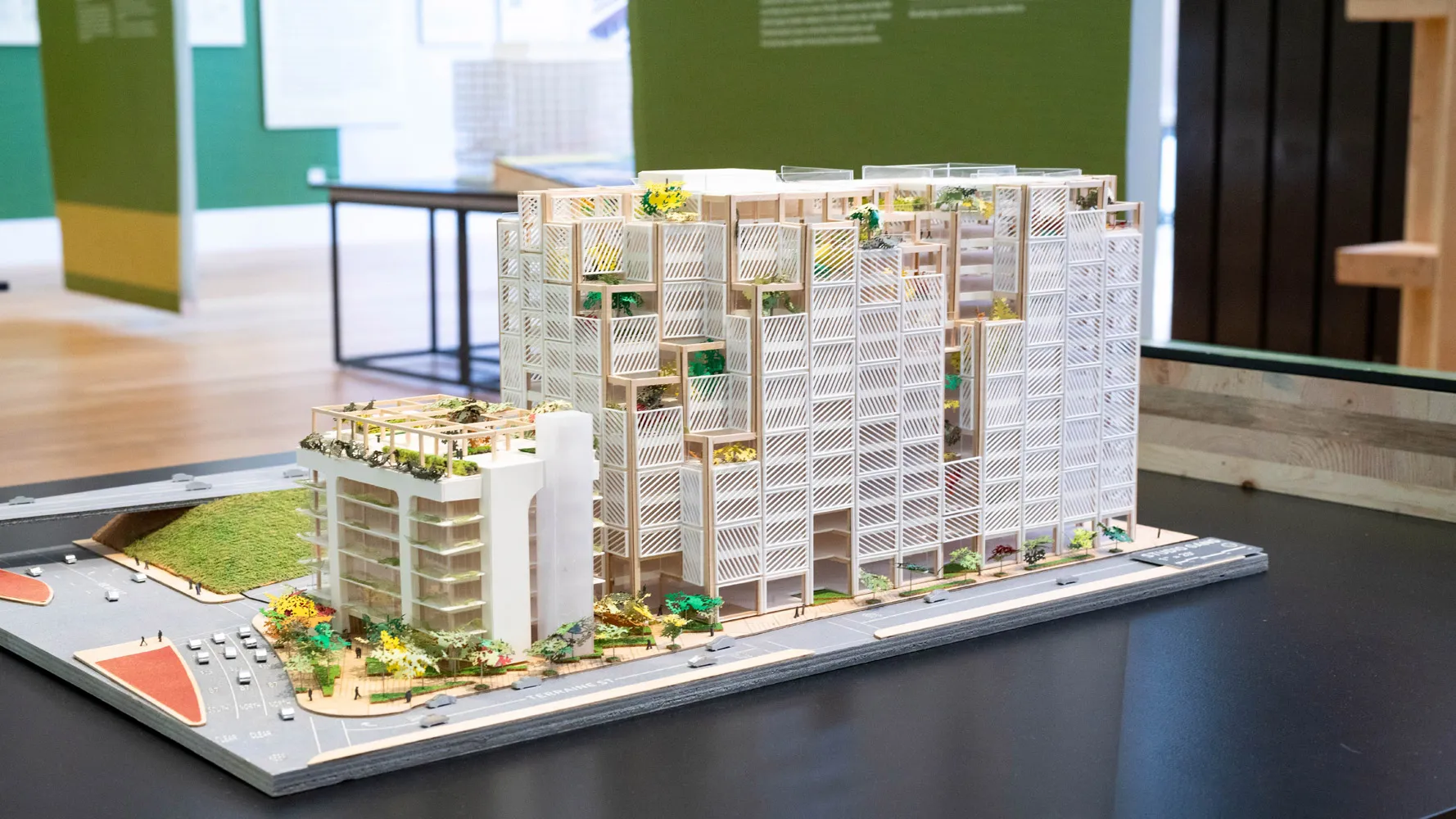
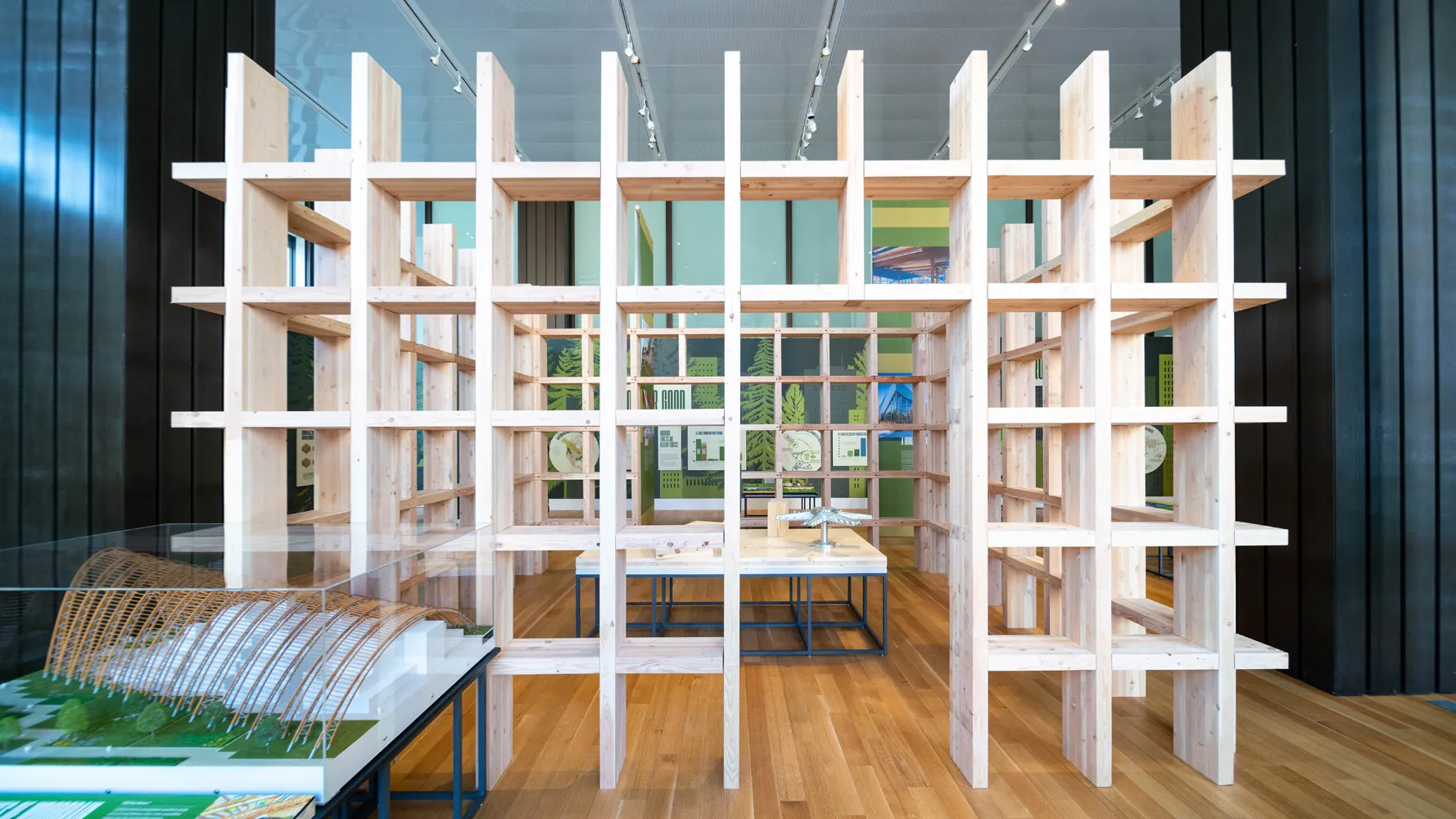


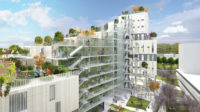
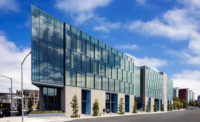
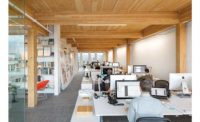
Post a comment to this article
Report Abusive Comment